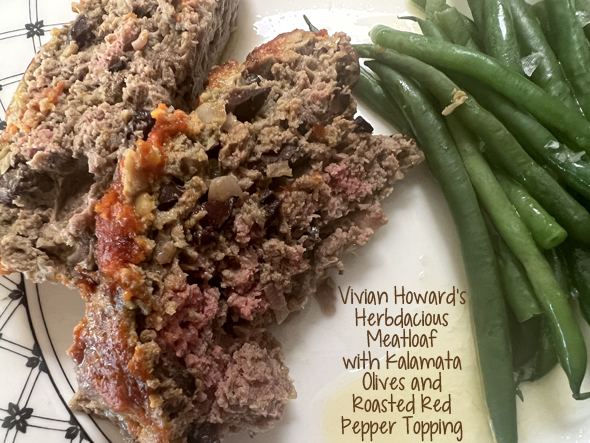 There were a couple of posts I’d forgotten about writing up. This one for sure. Herbdacious is an herb paste you prepare in bulk (well, it makes a cup or so) and you use it judiciously in other things. The meatloaf? With Kalamata olives? How’s that for different?
There were a couple of posts I’d forgotten about writing up. This one for sure. Herbdacious is an herb paste you prepare in bulk (well, it makes a cup or so) and you use it judiciously in other things. The meatloaf? With Kalamata olives? How’s that for different?
You have to hand it to chefs these days – well, maybe for a long time. It’s their job to make ordinary things better; or to create some new method of cooking, or combine unusual ingredients to make an all-new flavor of something. The latter is the case here – who would have thought of using Kalamata olives in a meatloaf? Never in a million years would I have created that! I was skeptical. Yet, this meatloaf is delicious. It’s definitely savory – you know what I mean in that some meatloaves have a sweet topping, like ketchup. My old family favorite is one of those with a sweet and sour tomato-based topping. This one – although it does have a bit of honey in it, it’s still a very savory meatloaf.
Over the years I’ve had a love-hate relationship with Kalamata olives. Early on, I was in love with them, put them in everything. But they’re fairly bitter, and as my taste buds have changed with age (is that a thing?). I do use them occasionally, but not often. My first instinct was to use a different olive, but then I’d be changing the recipe from what Vivian Howard intended, so I did use the Kalamata. Thank goodness they sell them pitted these days. And indeed, I liked them in the meatloaf.
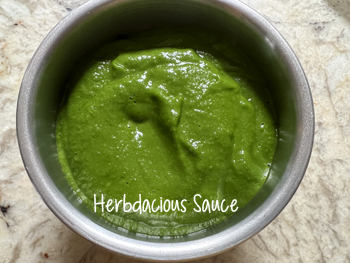 But first, we have to talk about Herbdacious. This is another one of Vivian Howard’s flavor heroes. So what is it, you ask? It’s a thick olive oil, garlic and herb/cheese/lemon juice paste. It stores well in the frig (with a little olive oil film on top to keep it fresh) or you can freeze it. The meatloaf recipe calls for 2/3 cup of Herbdacious. The Herbdacious recipe below makes 2 cups (mostly it’s made in a blender), so you’ll have plenty leftover to use in something else (soup?, a vinaigrette? stew? see below). For ideas, Vivian suggests:
But first, we have to talk about Herbdacious. This is another one of Vivian Howard’s flavor heroes. So what is it, you ask? It’s a thick olive oil, garlic and herb/cheese/lemon juice paste. It stores well in the frig (with a little olive oil film on top to keep it fresh) or you can freeze it. The meatloaf recipe calls for 2/3 cup of Herbdacious. The Herbdacious recipe below makes 2 cups (mostly it’s made in a blender), so you’ll have plenty leftover to use in something else (soup?, a vinaigrette? stew? see below). For ideas, Vivian suggests:
. . . mix with mayo for/on a BLT, slather on corn on the cob, drizzle over bean soup, on grilled or sauteed veggies, over a baked potato, add to guacamole or avocado toast, dot on a tomato or watermelon salad with creamy cheese, slather on bread with cheese for garlic bread, as a green base for pizza, to dress pasta or grain salads, in deviled eggs or egg salad, toss with stale bread to make croutons.
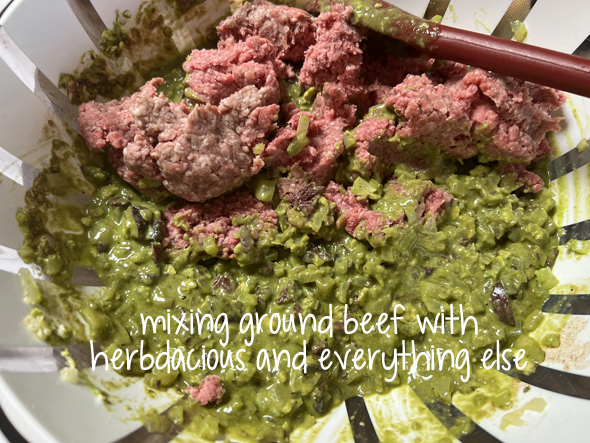 The meatloaf is mixed up like any other meatloaf although it have one unusual ingredients: Greek yogurt. This recipe makes one huge meatloaf. If I made it again, I think I would shape it into two loaves, but if you’re feeding a crowd, then go for the full 2 1/2 pound loaf. Instead of bread crumbs, Vivian calls for crushed saltine crackers. With the herbdacious in it, the mixture is a pretty unusual color – kind of green/brown. See the photo below, kinda greenish. But the finished product doesn’t look unusual at all.
The meatloaf is mixed up like any other meatloaf although it have one unusual ingredients: Greek yogurt. This recipe makes one huge meatloaf. If I made it again, I think I would shape it into two loaves, but if you’re feeding a crowd, then go for the full 2 1/2 pound loaf. Instead of bread crumbs, Vivian calls for crushed saltine crackers. With the herbdacious in it, the mixture is a pretty unusual color – kind of green/brown. See the photo below, kinda greenish. But the finished product doesn’t look unusual at all.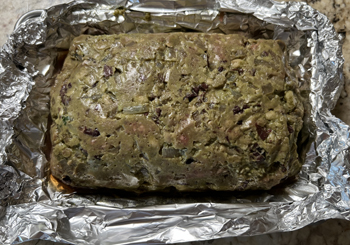
In her cookbook she included recipes to use herbdacious: a clam dish, as a marinade for leg of lamb, part of Italian meat sauce (gravy), a chicken salad, a new version of Chex Mix (Chex and Cheez-Its, nuts, saltines, bagel chips), a Caesar salad vinaigrette, a zucchini sauce for fettucine, in a citrus salad, and lastly, in mashed potatoes. I haven’t made any of those yet. I should!
If you’re willing to try a very different kind of meatloaf, I recommend this one.
What’s GOOD: the meatloaf is wonderfully moist and flavorful from the Kalamata olives and the sun-dried tomato topping. I’m not a huge fan of sun-dried tomatoes, but this topping was good; I ate it. The meatloaf would make great sandwiches afterwards, and certainly is something I’d be willing to make for guests (since it’s so unusual).
What’s NOT: this has a couple of unusual ingredients, and it makes a huge meatloaf. Am sure it could be scaled down to a 1 1/2-pound variety, however.
MEATLOAF: printer-friendly PDF and MasterCook file (click link to open recipe)
HERBDACIOUS: printer-friendly PDF and MasterCook file (click link to open recipe)
* Exported from MasterCook *
Meatloaf with Herbdacious
Recipe By: Vivian Howard, This Will Make It Taste Good
Servings: 12
1 tablespoon EVOO
2 large onions — finely diced
2 1/2 teaspoons kosher salt — divided use
1 teaspoon freshly ground black pepper
2 large eggs
1/2 cup Greek yogurt, full fat
2/3 cup Herbdacious
1 cup Kalamata olives, pitted — drained, chopped
2 tablespoons Worcestershire sauce
2 1/2 pounds ground beef
1/2 cup saltine crackers — or bread crumbs
TOPPING:
1/2 cup tomatoes, sun-dried — drained, chopped finely
1 1/2 cups roasted red peppers — drained, chopped
2 tablespoons honey
2 tablespoons red wine vinegar
1. Preheat the oven to 325°F.
2. Warm a 10-inch skillet on medium heat.
3. Dice the 2 onions. Sauté the onions for 10 minutes until translucent and soft. Season the onions with 1 tsp salt and pepper.
4. Add parchment paper to a 9 X 13-inch baking pan.
5. TOPPING: Combine the sun-dried tomatoes, roasted red peppers, honey, vinegar, and 1/2 tsp salt in a blender. Blend the ingredients until smooth.
6. On a cutting board, roughly chop the Kalamata olives. Measure and then crush the saltine crackers, then set aside.
7. In a large bowl, whisk together the eggs, Greek Yogurt, Herbdacious, Kalamata olives, beef, crushed saltine crackers, and remaining 1 tsp salt. Gently mix the ingredients in the bowl, not too much to overwork the ingredients.
8. Spray the baking pan with the parchment paper with non-stick spray.
9. Dump the meat mixture on the parchment paper in the baking dish. Shape the meat into a rectangle block, around 3 X 3 X 12-inches. Spread the tomato mixture over the top of the meatloaf, taking care to spread it over all the sides.
10. Bake the meatloaf, on the middle rack, for 1 hour, or until the internal temperature reaches 165°F. Remove the meatloaf from the oven and let it rest for 3-5 minutes before serving.
Per Serving: 396 Calories; 37g Fat (68.1% calories from fat); 22g Protein; 17g Carbohydrate; 2g Dietary Fiber; 100mg Cholesterol; 1400mg Sodium; 6g Total Sugars; trace Vitamin D; 81mg Calcium; 3mg Iron; 474mg Potassium; 231mg Phosphorus.
. . .
Herbdacious
Recipe By: Vivian Howard, This Will Make It Taste Good
Servings: 12
2 heads garlic — peeled (about 20 cloves)
2/3 cup EVOO
1 cup fresh basil — packed
1/4 cup fresh parsley — packed
1/4 cup fresh dill — packed – or mint, chervil or cilantro
1/4 cup green onions — roughly chopped, green parts only
1/2 cup Parmigiano-Reggiano cheese — grated (use a Microplane)
3 tablespoons fresh lemon juice
Zest of 2 lemons
1 1/2 teaspoons kosher salt
1. In a small saucepan, bring the garlic cloves and olive oil up to a simmer over very low heat. If it begins to sizzle and boil, pull it off the heat and allow it to cool slightly before you return it to the hot eye of the stove. The idea is to slowly poach the garlic in the oil rather than fry it. This could take as long as 20 minutes if you keep the heat extremely moderate. When the garlic is done, it will be soft and just slightly browned.
2. This garlic confit plus its oil are kitchen heroes in their own right and can be used anywhere you want mellow garlic notes. You could stop this recipe right here and save those little garlic bombs in the fridge for a month, as long as they are submerged in oil. Pureed, the cloves are especially useful as a means to thicken and add flavor to sauces.
3. But you don’t get to herbdacious by calling it quits early. Once the garlic confit is completely cool, put it and all the remaining ingredients in the most powerful blender you have and let it rip until the mixture is smooth and green. Store herbdacious in a sealed container in your fridge for up to 2 weeks or in your freezer for up to 3 months. Makes 2 cups.
Per Serving: 148 Calories; 15g Fat (87.4% calories from fat); 4g Protein; 1g Carbohydrate; trace Dietary Fiber; 7mg Cholesterol; 407mg Sodium; trace Total Sugars; trace Vitamin D; 125mg Calcium; trace Iron; 33mg Potassium; 72mg Phosphorus.






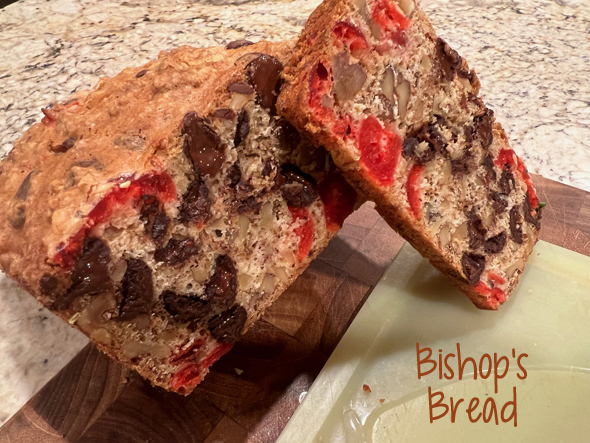



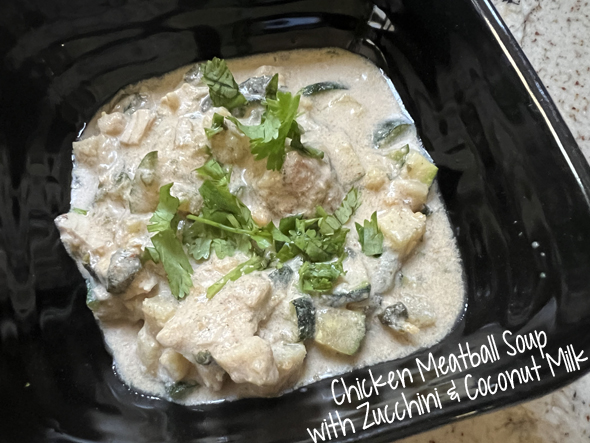
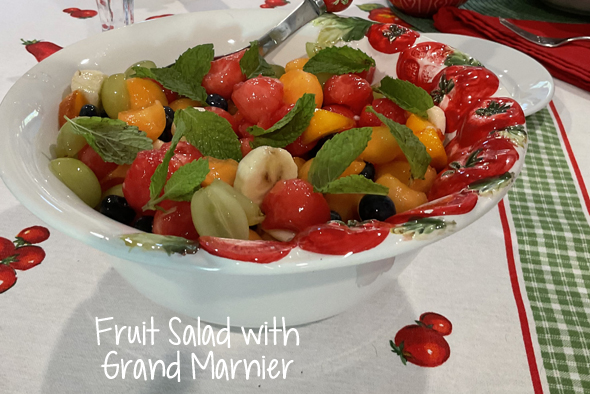
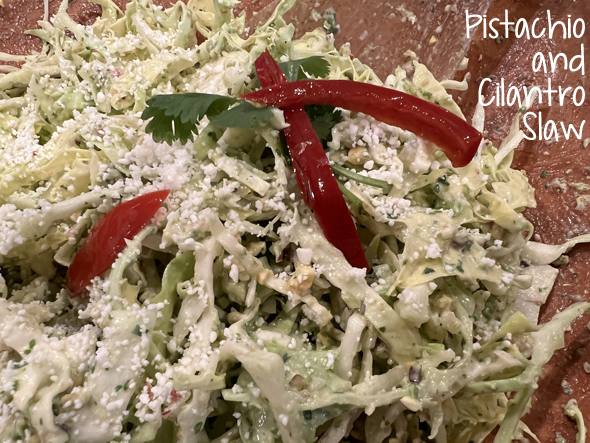

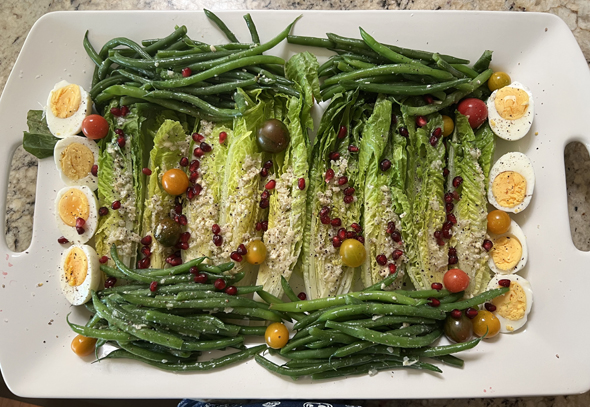
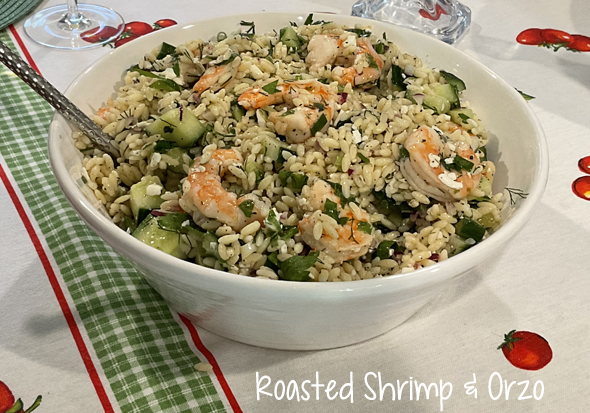
Leave a Comment!